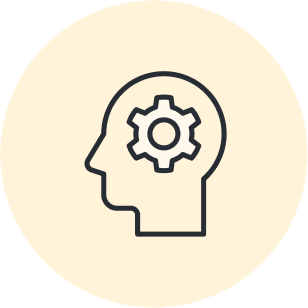
What is demand planning? Tips, strategies, and tools
Reading time: about 6 min
Topics:
Think back to your first economics class, where you learned about the principles of supply and demand. If something is in high demand, that’s great for the supplier. And if no one wants what the supplier has, well, that’s a problem. While supply and demand can seem unpredictable and unmanageable, there are ways to influence and plan it. In this article, we’ll dive into what demand planning is, why it’s important, and provide you with a template to take some of the heavy lifting out of the equation.
What is demand planning?
Demand planning is the part of supply chain management that involves forecasting future demand for your product or service. It's basically the process of estimating how much of your product customers will want to buy during a specific time period—that can mean weeks, months, or even years into the future.
Demand planning and forecasting involves looking at historical sales data, market trends, and economic indicators to help you predict future demand patterns. Looking at past sales and the current market helps businesses make smarter decisions about production, inventory management, procurement, and resource allocation.
But demand planning is not a one-and-done deal—it happens repeatedly and requires monitoring, evaluating, and iterating to ensure its accuracy.
Why is demand planning important?
You might be thinking, “But if the product is good enough, people will want it, so who cares about planning?” That might be true, but how much product should you keep on hand? Say you’re a Halloween candy company. Candy corn is your best selling candy, so you make a lot of it. But it’s April. So now, all that candy is sitting in your warehouse getting older by the minute, and it's stale by the time Halloween rolls around. Worse, because it’s been sitting in your warehouse taking up room, you don’t have space for your other candy. And what if this is the year all sources point to candy corn not selling well?
Here’s why demand planning and forecasting matters from every angle:
-
Optimizing inventory: Knowing how much of a product customers are likely to buy helps prevent shortages or excess inventory, which means reducing carrying costs and improving cash flow.
-
Making customers happy: By having the right products available when and where customers want them, you can avoid lost sales due to shortages and deliver products quickly, which is increasingly important in a world where customers want things almost instantly.
-
Reducing costs: Accurate demand planning helps minimize costs associated with production, inventory management, transportation, and warehousing. Plus, when you know how much supply to have on hand, you won’t waste money on rush ordering more inventory.
-
Making smarter decisions: Understanding what customers are buying helps you determine how to best utilize that knowledge. Your business can identify opportunities for growth, allocate resources effectively, and even come up with competitive pricing and marketing strategies.
-
Lessening risks: Demand planning lets you plan for everything from overstocking to supply chain disruptions. When you know what to expect, your business can adapt to uncertainties and keep operating.
What exactly is a demand plan?
Demand planning is essentially a detailed outline. What it’s not is a forecast. A forecast predicts the quantity of product that customers will purchase in the future. But it doesn’t look at the entire supply chain to balance supply with demand–it’s focused purely on prediction. Essentially, demand forecasting is a component of demand planning.
A demand plan usually includes the following:
-
Demand forecast: This is the estimated quantity of products that customers are expected to purchase in a set time period.
-
Uncertainties: There’s some guesswork involved because no one really knows what the future holds. Being transparent is important. You’ll want to document the assumptions and uncertainties underlying the forecast, such as changes in consumer preferences, market conditions, or external factors such as regulatory changes or natural disasters.
-
Demand drivers: What’s actually influencing the need for your product? This could include economic indicators, consumer behavior, competitive factors, marketing initiatives, and product lifecycle stage.
-
Performance metrics: You’ll need to track forecast accuracy and monitor deviations from the demand plan. These metrics usually include forecast accuracy, bias, mean absolute percentage error (MAPE), and inventory turnover.
-
Input from others: Get insights from sales, marketing, operations, finance, and supply chain teams, and add them into your demand plan. This makes your demand plan more accurate and actionable.
The demand planning process
Here are the steps to begin your demand planning process:
-
Gather your team: This means stakeholders from across your business—from sales to marketing. Make sure you define what everyone’s roles and responsibilities are to keep boundaries in place.
-
Define external and internal data: Start adding in everything you know about demand from your internal numbers, such as sales data and warehousing info. Then add in external data, such as info about suppliers, supply chain times, and more.
-
Implement the demand forecast: Use markers such as market intelligence, customer feedback, promotional activities, and new product launches. You might want to use forecast accuracy analysis or scenario planning to assess the reliability and robustness of the forecasts.
-
Check your work: Share your demand plan with other stakeholders to gain buy-in.
-
Adjust your inventory: Based on your demand plan, how does your inventory look? Do you have enough or too much?
-
Monitor: Look at key performance metrics, such as forecast accuracy, inventory turns, service levels, and fill rates. Monitor regularly to track the effectiveness of your demand planning activities.
Demand planning tools and techniques
The above are steps involved in demand planning, but there are different demand planning tools and techniques to utilize:
Linear regression
This method assumes that demand will continue to increase or decrease at a constant rate over time, making projections relatively straightforward. By looking at historical sales data and identifying linear trends, you can predict future demand levels, allowing for more accurate inventory management, production scheduling, and resource allocation. The downside to this approach is that it may not account for sudden changes or external factors impacting demand, which means you’ll need to regularly reassess and adjust to maintain accuracy.
Benchmarking
Benchmarking demand planning looks at a company's demand forecasting and planning processes against industry standards. This method analyzes key metrics to find areas for improvement. By benchmarking against industry leaders or established benchmarks, your business can gain insights into its relative performance and implement strategies to optimize demand planning processes.
Demand sensing
Demand sensing involves leveraging real-time data and advanced analytics to detect changes in demand patterns. Demand sensing integrates point-of-sale data, social media trends, and weather patterns to generate more accurate short-term forecasts.
Delphi method
This method involves a structured, iterative approach to forecasting that relies on expert opinions and consensus building. First, a panel of experts independently provides forecasts or judgments about future demand. Then, these forecasts are aggregated, analyzed, and anonymized before being shared with the panel again for further iteration. This process continues until a consensus is reached, typically through several rounds of feedback and refinement.
Demand planning is crucial for any business. By analyzing historical sales data, market trends, and economic indicators, businesses can make informed decisions about production, inventory management, and resource allocation. And what does that mean? Happier customers, inventory that matches demand, and a healthier bottom line.

Start the demand planning process with our free template.
Try nowAbout Lucidchart
Lucidchart, a cloud-based intelligent diagramming application, is a core component of Lucid Software's Visual Collaboration Suite. This intuitive, cloud-based solution empowers teams to collaborate in real-time to build flowcharts, mockups, UML diagrams, customer journey maps, and more. Lucidchart propels teams forward to build the future faster. Lucid is proud to serve top businesses around the world, including customers such as Google, GE, and NBC Universal, and 99% of the Fortune 500. Lucid partners with industry leaders, including Google, Atlassian, and Microsoft. Since its founding, Lucid has received numerous awards for its products, business, and workplace culture. For more information, visit lucidchart.com.
Related articles
How you can use Lucidchart to plan projects
Turn your ideas into real change when you use Lucidchart. We'll walk you through some key steps of scoping and planning a project and link to some helpful templates that will help you get started right away.
5 steps to build a next-level product roadmap in Lucidchart
Use this guide to build a product roadmap in Lucidchart. Includes instructions on how to link data, use smart containers, and add conditional formatting. Roadmap templates included!
